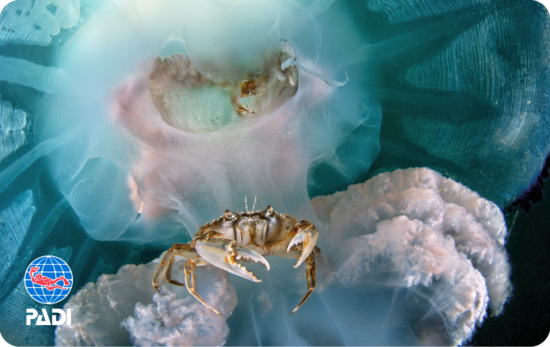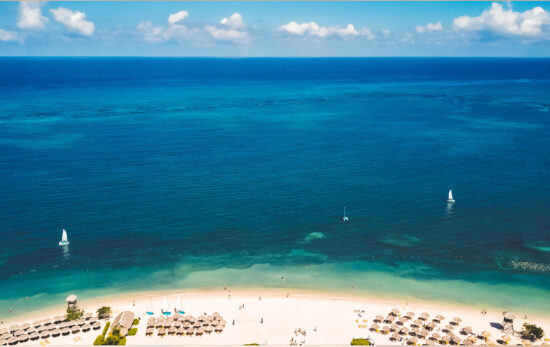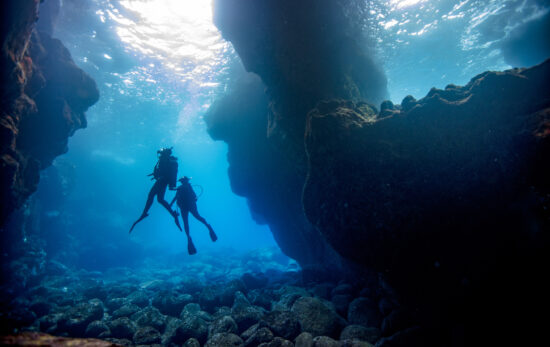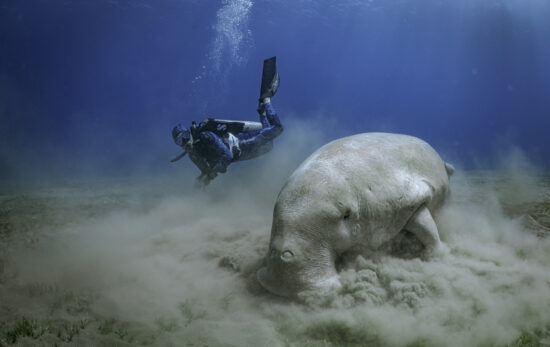As divers, we usually get really excited to tell others about our dive experiences and what we saw underwater. After a dive, you might hear dive buddies ask each other questions like “Did you see that huge fish? What was that?” Well, a few years ago I went diving off the coast of San Diego, California. As soon as I surfaced, I exclaimed “Something strange flew, no, swam in front of me! It looked like a scuba diving bird!” To this day, I laugh as I recall my experience hanging out 60 feet below by the submarine canyon, and being startled and confused as I saw a bird, though it looked more like a narrow black football (probably a cormorant), swim up, down and around me. Personally, this experience sparked an interest that I wanted to share with other divers.
What are some other diving birds you might see when you’re diving? Or while you are getting suited up, traveling to your dive site? There is a large variety of seabirds that live on the coast, travel far distances across the ocean, stay close to the surface, or dive to great depths. Here are four marine and diving birds you might get the chance to see underwater while diving!

Cormorants
I’m confident that the bird I saw while diving was a Brandt’s Cormorant. It is the largest species of cormorant found on the Pacific coast of North America. Non-breeding adults have black feathers on their body, but their throat turns a vivid cobalt blue when they are breeding! These birds have an oval body, slender neck and large webbed feet which help them swim in the water. Brandt’s Cormorants are great divers and swimmers. They dive from the surface and swim underwater to find food like small fish. They catch it by driving the prey to the surface and then grabbing it with their bills. Also, these birds can swim deeper than 200 feet! After a dive, a Brandt’s Cormorant will stand with their wings to dry out their feathers. Their feathers become waterlogged because they are not waterproof. This actually helps the cormorant to dive deeper!
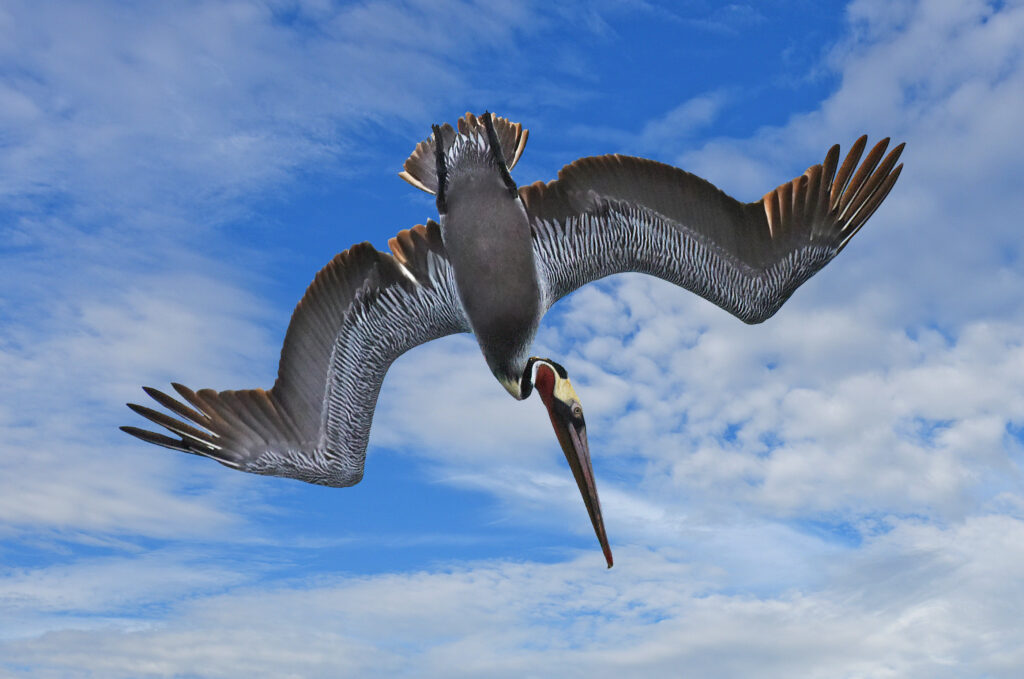
Pelicans
I’ve lived the majority of my life somewhere along the California coast, so I must include the California brown pelican! You’ll likely see multiple pelicans flying in a V-formation or in a line when you’re prepping for a dive at the beach. As their name suggests, these pelicans have an all-brown body with a large bill and pouch, webbed feet, and broad wings. Brown pelicans are about 4 feet tall, with a wingspan over 6.5 feet, and weigh about 8 pounds. Their size makes it even more spectacular to watch them dive into the ocean to feed. The brown pelican dives into the water from ten to thirty feet in the air, but can dive from as high as 100 feet! When it hits the water, the force of their entry can stun fish as deep as six feet below. Pelicans open their bills underwater so they can scoop and store fish in their large pouches. Then at the surface they drain the pouches of water and eat the fish.
Did you know that there are four different types of pelicans? They all have different feeding strategies, and the brown pelican is actually the smallest- read a summary of the pelicans here.
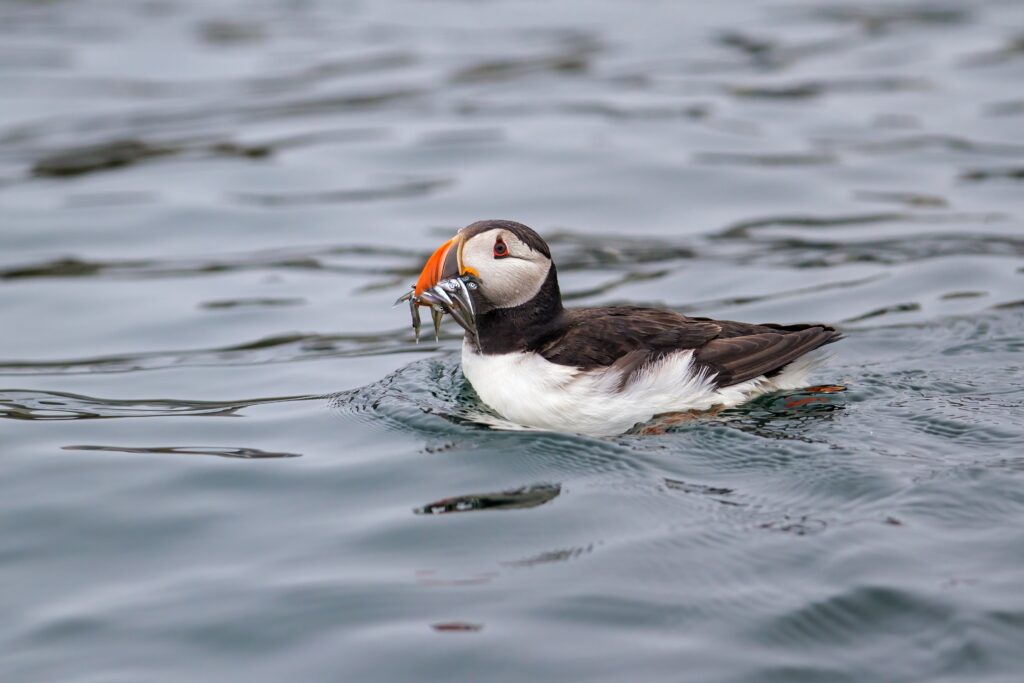
Puffins
Next, is the puffin. I must confess that I was much older than I’d like to admit when I finally realized that puffins are real and not just a cute cartoon bird from the Christmas movie, Elf. But these birds’ range is only in the northern hemisphere (i.e. close to Santa Claus). Puffins also have some cute nicknames due to their coloring. My favorite is the “sea parrot” because the colorful orange and yellow on their beaks and faces contrast against the distinguished look of their black and white plumage. There are four species of puffins– Tufted Puffin, Horned Puffin, Atlantic Puffin, and Rhinoceros Auklet. The Rhinoceros Auklet looks the most different from the rest of the puffins. But all four puffins have similarities such as swimming underwater to catch their food, nesting underground, and carrying several fish in their bills to feed to their chicks.
The Atlantic Puffin is the smallest of the four species, is known to be gregarious and confident, and is a favorite of birdwatchers. They’re the only puffins found in the Atlantic Ocean so you’d visit places like Maine, Newfoundland, and the United Kingdom to observe and dive with them. In terms of diving, the Atlantic Puffin starts from the surface and forages for small fish. They dive as deep as 50 feet usually, but are capable of diving to 200 feet!

Penguins
The dapper diving bird of the southern hemisphere is the penguin! These birds live only in the southern hemisphere, except the Galapagos Penguin. Penguins differ from the previous three diving birds by the fact that they are the only ones that do not fly. Penguins have fully adapted to living mostly in the water! They can spend up to 75% of their lives in the water.
The smallest of these birds is the Little Penguin, also known as the Little Blue Penguin and Fairy Penguin. They can be as tall as 16 inches and weigh up to 2 pounds. The feathers on the majority of their body are dark blue, blue-gray to black, and white on their chest and belly. This is especially helpful for them to camouflage as they swim in the ocean. They feed in shallow waters, can dive down to 30 feet, and can swim at speeds of up to 4 mph. Little Penguins live in New Zealand and Southern Australia. If you want to see these tiny divers on your next diving trip, check out PADI’s dive guide for New Zealand.

The ocean is full of surprises and each diving experience is unique! Want to learn more about ocean animals and how all of the living and nonliving parts of the ocean interact with each other? Then check out PADI’s Underwater Naturalist continuing education course.

